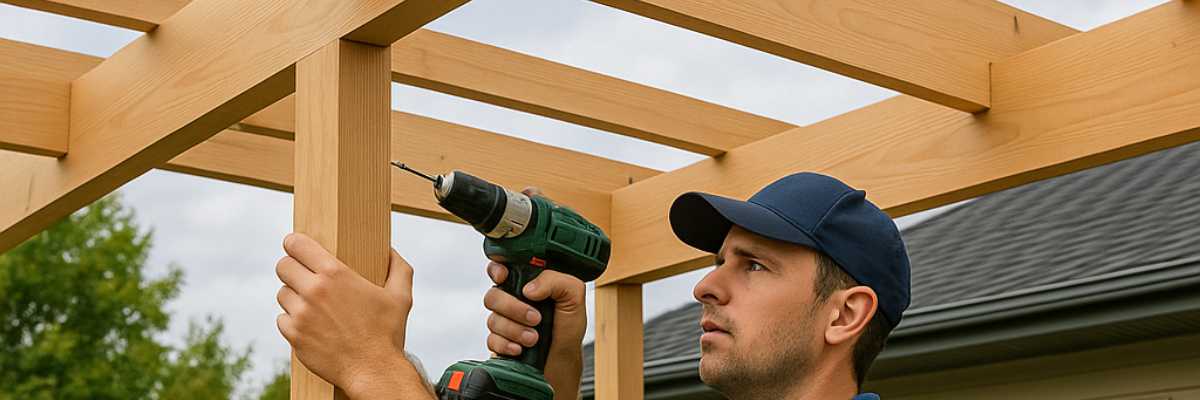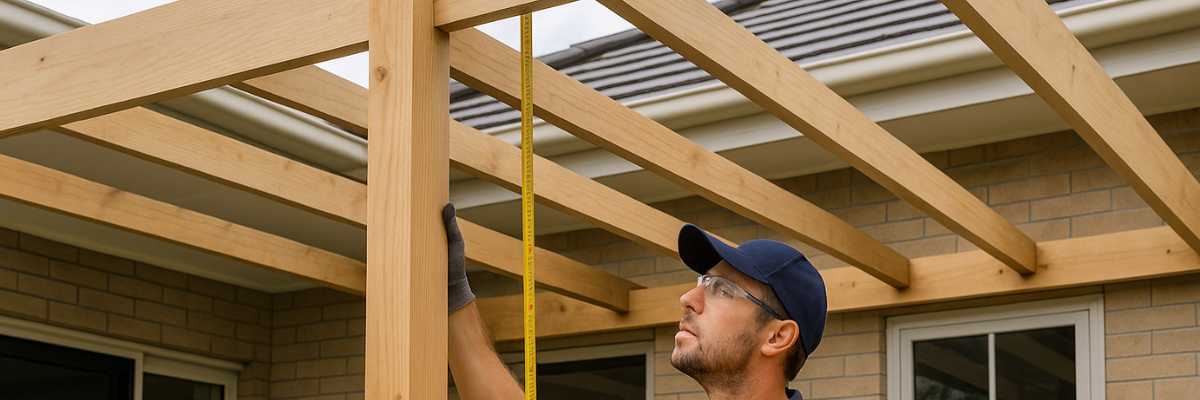Pergola is the best way to enhance the appearance of your outdoor. Whether you want to create a covered area for dining, lounging, or entertaining, a well-executed pergola requires careful planning & construction. With the help of this checklist, you can make sure that the project runs well from beginning to end.
Design and Planning
You can make decisions about a pergola's function, dimensions, and style is the first stage in building one.
- Purpose: You should determine the purpose of the pergola before proceeding. So, think that it will be a decorative element, a canopy for climbing plants, or a shade for an alfresco eating area.
- Location: Decide where in your yard is most ideal. You can consider elements including the ground's stability or slope, wind direction, sun exposure, and closeness to the home. Also, you should make sure the position doesn't conflict with any future landscaping ideas or subsurface services.
- Size: Take exact measurements of the area. Make sure the pergola is the right size for space and that there is enough room below for furniture & mobility. A pergola's typical height is between eight and twelve feet, but you can modify it to suit your needs.
- Style and Materials: You may select the materials to be used as well as the style (traditional, rustic, or modern). Common materials include vinyl, metal (steel or aluminium), and wood (cedar, pine, and redwood). Every material has advantages and needs upkeep.
Permits and Local Laws
Consult your local authorities on building codes and permits prior to commencing construction.
- Zoning laws: Check the specific zoning laws for distances from easements and property lines.
- Homeowner's Association (HOA): To avoid fines or issues later, check the regulations and limitations pertaining to outdoor constructions if you live in a community overseen by a HOA.
Inventory of Materials
After the design is complete, the materials required for construction should be gathered. In order to make sure you don't miss anything, below is a detailed list:
- Lumber & Metal for the Frame: Depending on the design & material selected, the frame may be made of metal or lumber. When choosing wood, go for treated timber or naturally rot-resistant wood, such as redwood or cedar.
- Post anchors: These fasten the pergola posts to the deck or the ground. Based on your posts, select the appropriate size (usually 4x4 or 6x6).
- Concrete: For stability, concrete is required if you plan to bury the pergola pillars in the ground. For a quicker installation, use a quick-set concrete mix.
- Pergola Brackets: These can be decorative elements in addition to providing support for the beams.
- Joists and Rafters: The horizontal beams that provide the pergola its structure and shade are called joists and rafters. Make sure these fit your design's requirements for both size and quantity.
- Fasteners and Screws: If pressure-treated wood is being used, consider some things. For instance, you can select bolts, screws, or nails that are resistant to corrosion and appropriate for outdoor use.
- Roof Covering (Optional): Consider materials like polycarbonate panels, retractable awnings, and fabric canopies if you want additional shade or weather protection.
The construction procedure will go considerably more smoothly if you have the proper equipment on hand. assemble these necessary supplies before you begin:
- Measuring Tape: A measuring tape is used for precise measurements.
- Level: To guarantee that everything is level and plumb.
- Drill and bits: used to secure fasteners and drill pilot holes.
- Circular Saw: To cut wood or other materials to the proper length, use a circular saw.
- Post Hole Digger: If inserting the posts straight into the ground, use a post-hole digger.
- Hammer and Nails: Used for minor repairs and modifications.
- Ladder: To access the pergola's higher areas safely.
- Carpenter's Square: For gauging angles that are 90 degrees.
Pergola Site Preparation
A solid foundation and precise building depend on the build site being ready.
- Mark the Site: Using rope and stakes, mark the pergola's footprint. Also, work by making sure that the design is square and centred in the selected area.
- Clear the Space: Make sure the construction site is free of any bushes, trees, or other obstructions. Level the ground or get it ready for a patio or deck, if needed.
- Dig Post Holes: Prepare the holes for the posts if your pergola will have in-ground supports. The pergola's height and dimensions will determine the depth, which normally falls between 24 and 36 inches.
- Pour Footings Concrete: Pour concrete into the holes to provide stability after inserting the post anchors. As directed by the manufacturer, the concrete should set in 24 to 48 hours.
Constructing the Pergola
You can now begin construction on the property!
- Install the Posts: Fasten the posts to the concrete footings or anchors. To make sure they are precisely vertical, use a level.
- Attach the Beams: The posts are where the primary horizontal beams are fastened. Make sure these beams are level and sturdy because they will hold the joists and rafters.
- Install Rafters and Joists: To create the roof structure, the joists are positioned above the beams. For more support and shade, rafters can be added. To keep them in place, use screws or pergola brackets.
- Add Crossbeams (Optional): For additional shade, you may like to place lattice panels or crossbeams on top of the rafters, depending on your design.
Pergola Finishing Touch
Add the finishing touches to the main structure once it has been constructed to complete the design and guarantee long-term endurance.
- Sand and Treat the Wood: To keep wood safe from moisture, sunlight, and insects, sand any uneven edges and coat it with a weather-resistant stain or sealer.
- Installing a roof covering or shade (Optional): If you'd like additional weather protection, you can install polycarbonate panels, a canopy, or a cloth shade.
- Decorate the Pergola: To make the area more unique, add drapes, lighting, or climbing plants. For ambience, think about using lanterns or hanging lights.
Examining and Maintenance
Check the pergola's structure for stability and any loose connections once it has been constructed.
- Check Fasteners: Verify fasteners to make sure all brackets, bolts, and screws are in place. Any that appear loose, tighten.
- Frequent Maintenance: Check your pergola for wear indicators on a frequent basis to extend its lifespan. If necessary, reapply sealer or stain to keep the wood weatherproof.
Conclusion
With the help of the pergola build checklist, you'll have a well-thought-out plan to construct a stunning yet useful outdoor area. Your pergola will be long-lasting and a source of enjoyment if it is constructed with careful planning, the appropriate materials, and meticulous attention to detail.











